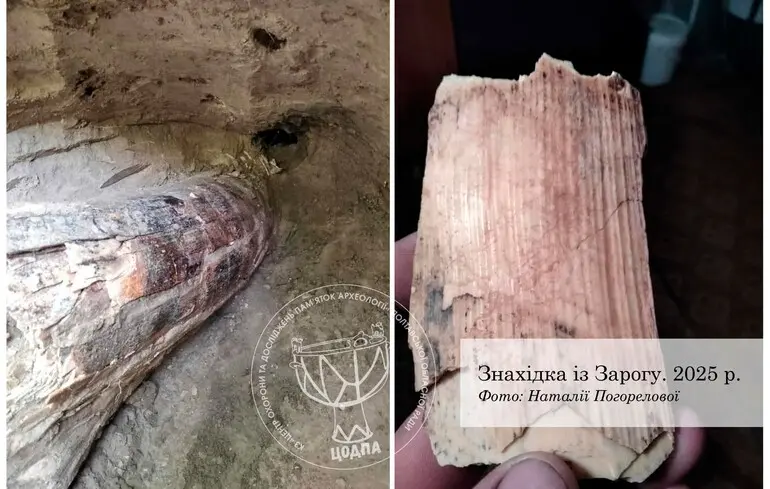Unexpected Discovery in Poltava Region: Ancient Mammoth Remains Found During Clay Excavation

In the Poltava region, within the Orzhytska community, a remarkable archaeological find has recently come to light, attracting the attention of scientists and cultural heritage specialists alike.
During routine earthworks for clay extraction, workers unintentionally uncovered fossils of a mammoth, buried underground for thousands of years.
This discovery represents a significant breakthrough for researchers, revealing a fragment of a mammoth tusk that, unfortunately, has suffered severe erosion and is in a damaged state, limiting its potential for museum display.The discovery was reported by local historian Natalia Pogorelova from the village of Zaryg.
While conducting clay digging near the forested area along the Orzhytsia River, she came across an unusual bone fragment that resembled a mammoth tusk.
The site is situated on the slope of an ancient terrace of the river, close to the surface.
Archaeological experts from the Center for the Protection and Study of Archaeological Heritage confirmed that these are indeed remains of an ancient mammoth, likely from the Ice Age.Preliminary analysis suggests that these bones were transported here by an ice sheet from distant lands.
The remains were found on the upper part of the slope of an old plateau, which is part of the ancient landscape that once hosted now-extinct megafauna thousands of years ago.
The finds are not isolated; a year earlier, in 2005, local residents discovered mammoth bones in the Taryshivsky brick factory quarry.
That discovery was also confirmed by Vyacheslav Sherstyuk, the current director of the Center, who also led excavations and confirmed the presence of mammoth remains in this area.Research showed that a specific deluvial deposit layer, situated at a depth of 5-6 meters, contained numerous fossilized remains—ranging from fragments of tusks to complete bones—indicating a substantial presence of mammoth fauna in this region during the Paleolithic period.
These bones showed no signs of human processing, which suggests they are true, untouched fossil remains from ancient times.All collected materials were transferred to the funds of the Vasyl Krychkevskyi Poltava Regional Museum and the Orzhytskyi Regional Museum of Local Lore.
Experts believe that this site might have been a major habitat area for mammoths on the Poltava territory.
They emphasize that while such finds are invaluable, a single fossil or fragment alone does not necessarily prove the existence of a Paleolithic settlement here.
Nonetheless, any accidental discovery contributes to uncovering the mysteries of prehistory and enhancing scientific understanding.The Center urges locals to report any such findings, as each piece can be vital for reconstructing the ancient environment.
Meanwhile, a prominent American startup, Colossal Biosciences, announced plans to bring the woolly mammoth back to life using advanced genetic technologies and investments exceeding $200 million, aiming to create a mammoth calf by 2028.
While some scientists remain skeptical about this project, proponents believe it can help restore biodiversity and contribute to planetary conservation efforts.

